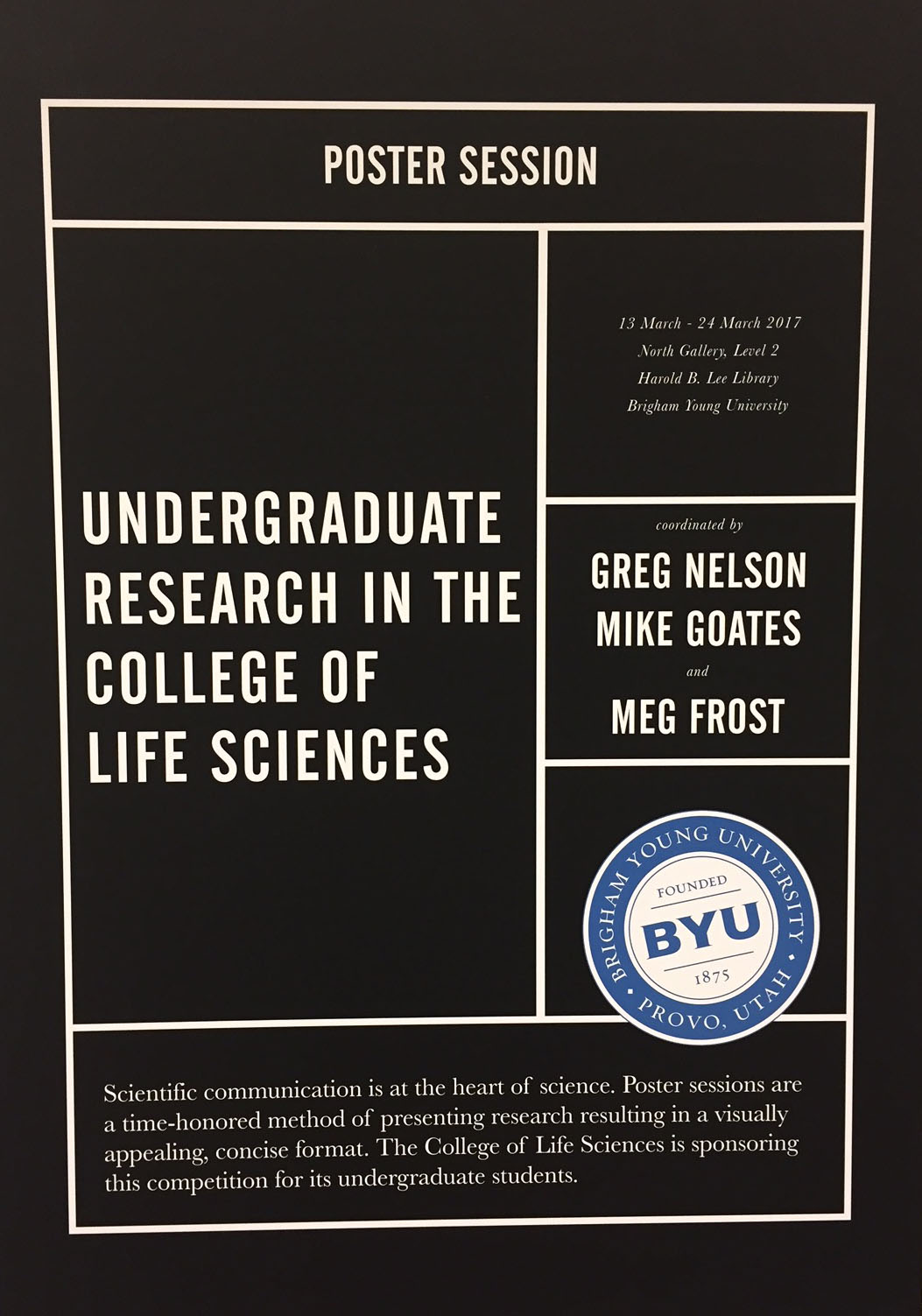Files
Download Full Text (817 KB)
Keywords
Bacteriophage, Antibiotic-Resistance, Bacteria, E. coli
Abstract
Bacteriophages are the natural enemy of bacteria. They infect and kill bacterial cells similarly to how animal viruses infect and kill our (eukaryotic) cells. Being viruses, bacteriophages need to get inside of their host to be able to replicate and survive. To do this, phages use receptor binding proteins (RBPs) to bind to various molecules on the surface of bacterial cells, which allows them to attach and initiate the first step of infection. Several novel bacteriophages were isolated from sewage samples across the Wasatch Front of Utah that infect Escherichia coli strain MG1655 and are being used to gain greater understanding of that initial step of binding and attachment between phage and host. Over 40 phages were tested against four different potential phage receptors, and approximately 25% of them were found to use the FhuA protein. FhuA is an outer membrane transport protein that helps the bacterial cell acquire essential iron, especially in low concentration amounts. FhuA looks like a barrel within the membrane that has multiple loops that extend out from the surface. FhuA proteins can be a factor in the pathogenicity of some microbes, and as such, studying and characterizing the interactions between host FhuA and phage RBPs is of medical interest. It was found that bacteriophages JLBYU37 and JLBYU41 are among those that use FhuA as their receptor. Their genomes were sequenced and annotated and submitted to NCBI. Further characterization was done on these two organisms, including Scanning Transmission Electron Microscopy (STEM), one step growth experiments to determine burst size, and analysis onto which loop of the FhuA protein they attach. JLBYU37 belongs to the Demerecviridae family, and it has an icosahedral capsid that is 61 nm tall and a long non contractile tail that is 128 nm in length. JLBYU41 is part of the Drexlerviridae family and has a capsid height of 65 nm, and a non contractile tail that is 140 nm long. JLBYU37 and JLBYU41 have burst sizes of 10 PFU/mL and 41 PFU/mL, respectively. The analyses reported in this poster presentation help us understand how phages interact with their host cells, and this information may aid in developing future applications such as phage therapy or ecological projects.
BYU ScholarsArchive Citation
Baeten, Ian W.; Lewis, Jessica M.; Janda, Kathryn E.; Kotter, David E.; Grose, Julianne H.; and McCleary, William R., "Phage Host Interactions in FhuA Dependent Bacteriophages" (2023). Library/Life Sciences Undergraduate Poster Competition 2023. 23.
https://scholarsarchive.byu.edu/library_studentposters_2023/23
Document Type
Poster
Publication Date
2023-03-03
Language
English
College
Life Sciences
Department
Microbiology and Molecular Biology
Copyright Use Information
https://lib.byu.edu/about/copyright/


